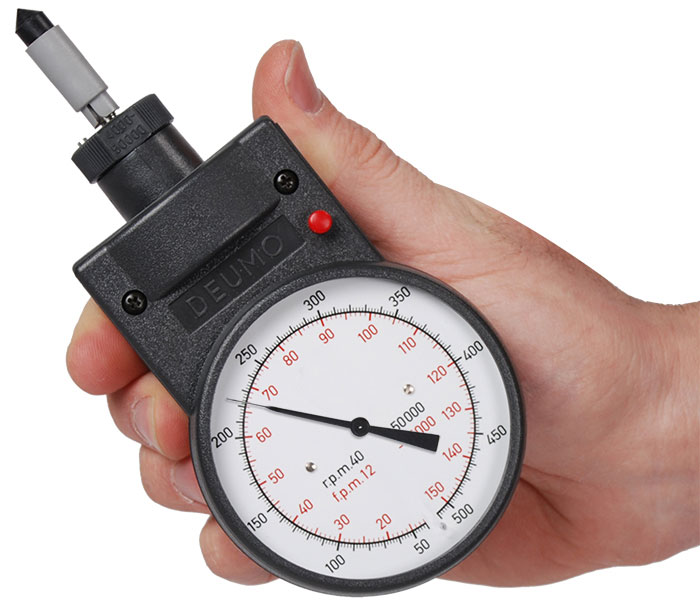Comprehensive Overview to Understanding and Utilizing a Tachometer Properly
Comprehensive Overview to Understanding and Utilizing a Tachometer Properly
Blog Article
The Relevance of a Tachometer in Keeping Track Of Engine Rate and Performance in Automotive Applications
In the world of automotive design, the tachometer stands as a pivotal instrument in the driver's toolbox, providing a direct home window right into the inner operations of a car's engine. Past its function as a simple scale of changes per minute (RPM), the tachometer works as an important device for enthusiasts and experts alike, supplying real-time insights into engine efficiency and health. Comprehending the value of this device goes beyond surface-level monitorings, diving right into the elaborate connection in between engine rate, power output, and overall driving experience. As we check out the complex function of the tachometer in automobile applications, a deeper admiration for its influence on vehicle dynamics and effectiveness begins to arise.
Relevance of Checking Engine RPM
Checking engine RPM, or transformations per minute, is a critical facet of automobile maintenance and performance analysis. Engine RPM directly associates with the speed at which the engine's crankshaft revolves, suggesting how swiftly the engine is running.
Moreover, monitoring engine RPM is necessary for performance analysis in racing and high-performance lorries. Maintaining ideal RPM levels is vital for achieving peak power outcome and acceleration. Racers commonly use tachometers to ensure they are operating within the perfect RPM array for maximum performance. In recap, monitoring engine RPM is not just essential for finding problems yet also for enhancing engine efficiency in various automobile applications.

Benefits of Real-Time Data
In vehicle applications, real-time information plays a critical duty in providing immediate understandings into the efficiency and problem of the vehicle. By continually keeping track of various parameters such as engine speed, temperature, fuel intake, and more, real-time data supplies many advantages that add to boosted performance and safety and security on the roadway.
One considerable advantage of real-time data is its ability to sharp drivers and technicians to any kind of abnormalities or problems promptly. This proactive strategy makes it possible for quick identification of possible troubles, enabling prompt interventions to stop further damages or malfunctions. Furthermore, real-time data promotes efficiency optimization by supplying instant feedback on driving behaviors and engine effectiveness. Chauffeurs can readjust their habits in real-time based on this details to achieve far better fuel economy and lengthen the lifespan of their lorry.

Additionally, real-time data plays a crucial role in contemporary auto diagnostics, enabling professionals to rapidly identify and resolve malfunctions. This brings about reduced downtime, lower upkeep prices, and ultimately, enhanced general lorry reliability and durability (tachometer). By using the power of real-time data, automobile stakeholders can make educated choices that favorably influence both the efficiency and longevity of the car
Effect On Equipment Shifts
Efficient gear shifts in automotive applications dramatically influence overall performance and driving experience. The tachometer plays an important duty in maximizing equipment changes by providing real-time engine speed data to the motorist. When coming close to the redline on the tachometer, it indicates the vehicle driver to upshift to protect against over-revving the engine and causing prospective damages. On the various other hand, downshifting at the appropriate minute can aid keep the engine in its power band, making certain receptive velocity when required.
Moreover, the tachometer help in attaining smoother gear changes, specifically in hand-operated transmissions. By keeping an eye on engine speed, drivers can execute equipment changes at the ideal RPM array, reducing snagging motions and decreasing endure the transmission components. This precision in equipment adjustments not only enhances driving convenience however also adds to fuel effectiveness.
Enhancing Fuel Performance
Provided the crucial duty the tachometer plays in enhancing gear changes for efficiency and engine wellness, it straight adds to making best use of gas efficiency in auto applications. By offering real-time feedback on engine rate, the tachometer helps drivers in keeping the most effective RPM range for gas economy. When drivers continually keep track of the tachometer and readjust their driving routines accordingly, they can prevent unneeded fuel usage brought on by over-revving or carrying the engine.
Furthermore, the tachometer aids drivers determine one of the most fuel-efficient gear to be in at any kind of given minute, preventing the engine from working tougher than necessary. This is especially crucial during acceleration and travelling, where remaining in the right gear can substantially affect fuel performance. Additionally, the tachometer can inform drivers to prospective mechanical concerns that can be negatively affecting fuel economic climate, such as a sliding clutch or a stopped up air filter. To conclude, the tachometer functions as an important tool in improving gas performance by advertising optimum driving practices and identifying locations for improvement in the vehicle's performance.

Making The Most Of Engine Longevity
The tachometer's role in checking engine rate and performance contributes in ensuring the long life of vehicle engines. By using the tachometer efficiently, drivers can optimize engine long life with mindful RPM monitoring. Constantly revving an engine expensive can lead to too much deterioration visite site on crucial components, directory such as the pistons, shutoffs, and bearings. Gradually, this can result in lowered engine performance and possible malfunctions. Monitoring the tachometer permits motorists to stay within the advised RPM range for their lorry, avoiding unneeded stress on the engine and expanding its life expectancy.

Final Thought
In verdict, the tachometer plays a vital role in checking engine speed and Read Full Report efficiency in automotive applications. By supplying real-time data on RPM, it permits effective equipment shifts, boosted fuel effectiveness, and taken full advantage of engine longevity. This tool is crucial for preserving ideal engine performance and ensuring the general capability of a car.
Report this page